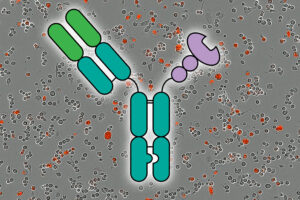
The role of general practitioners (GPs) is pivotal in the ongoing efforts to prevent congenital cytomegalovirus (CMV) infections. These strategies emphasize education on reducing transmission risks, targeted testing for at-risk individuals, and the swift identification of infections. As CMV remains a significant concern for pregnant women, the involvement of GPs is more crucial than ever.
Cytomegalovirus, a common herpesvirus, usually presents no symptoms or complications in healthy individuals with competent immune systems. However, the stakes are much higher when a woman contracts CMV during pregnancy, as it can lead to vertical transmission. This transmission can have severe consequences for the developing fetus, including brain damage, hydrops, anemia, stillbirth, or neonatal death.
Understanding the Impact of Congenital CMV
In high-income countries, the statistics are concerning. Approximately one in 200 infants is born with congenital CMV, and about one in ten of these infants will experience significant long-term health issues. These can range from sensorineural hearing loss and developmental delays to epilepsy and cerebral palsy.
In high-income countries, about one in 200 infants have congenital CMV, and around one in 10 of these will develop significant long-term health impacts.
The long-term outcomes of congenital CMV highlight the importance of early intervention and prevention strategies. GPs, as the first point of contact in healthcare, play an essential role in educating expectant mothers about the risks and preventive measures associated with CMV.
Prevention Strategies and the Role of GPs
The prevention of congenital CMV largely hinges on awareness and education. GPs are tasked with informing pregnant women about the ways CMV can be transmitted, such as through contact with the saliva or urine of young children. Practical advice includes avoiding sharing utensils, food, or drinks with young children, and practicing good hygiene.
Targeted testing is another critical component of prevention. GPs can identify women at higher risk of CMV infection and recommend appropriate testing. Early detection of CMV infection in pregnant women allows for timely interventions that can mitigate potential impacts on the fetus.
“The GP is key to current strategies for prevention of congenital CMV, which focus on education about reducing risk of transmission, targeted testing of those at risk, and prompt identification of infection.”
Expert Opinions and Future Directions
Experts in infectious diseases and maternal health emphasize the importance of integrating CMV education into routine prenatal care. Dr. Sarah Thompson, a leading expert in maternal-fetal medicine, states, “Educating expectant mothers about CMV should be as routine as discussing folic acid and ultrasound scans. Awareness is the first step in prevention.”
Looking forward, there is a call for more comprehensive public health campaigns to raise awareness about congenital CMV. Such initiatives could lead to the development of vaccines and other preventive measures that could significantly reduce the incidence of CMV-related complications.
Conclusion: The Path Ahead
The prevention of congenital CMV is a multifaceted challenge that requires the concerted efforts of healthcare professionals, public health authorities, and the community. GPs, by virtue of their role, are at the forefront of this battle, providing crucial education and early detection services that can make a significant difference in the lives of many infants and families.
As research continues and awareness grows, the hope is that the incidence of congenital CMV and its associated complications will decrease, leading to healthier outcomes for future generations.





